The Fréchet Distance Unleashed: Approximating a Dog with a Frog
Sariel Har-Peled, Benjamin Raichel, Eliot W. Robson
frechet.xyz
More applied than theory…
The Fréchet Distance
Similarity between curves
Started with (Alt and Godau 1995)
- Quadratic time / complicated (use parametric search)
- Large amount of work on extensions, implementation, etc.
Frogs taking a walk
The Discrete Fréchet Distance
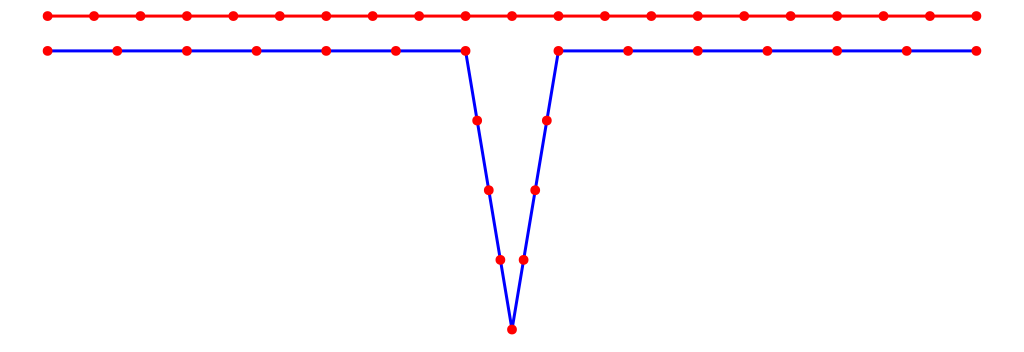
The problem
with the Fréchet Distance
The problem II
with the Fréchet Distance


This work
- More nuanced def of Fréchet Distance
- Better + simpler algorithms.
- Implementation (packages)
- Official packages
- New ideas from implementation.
The Fréchet distance via free space diagram
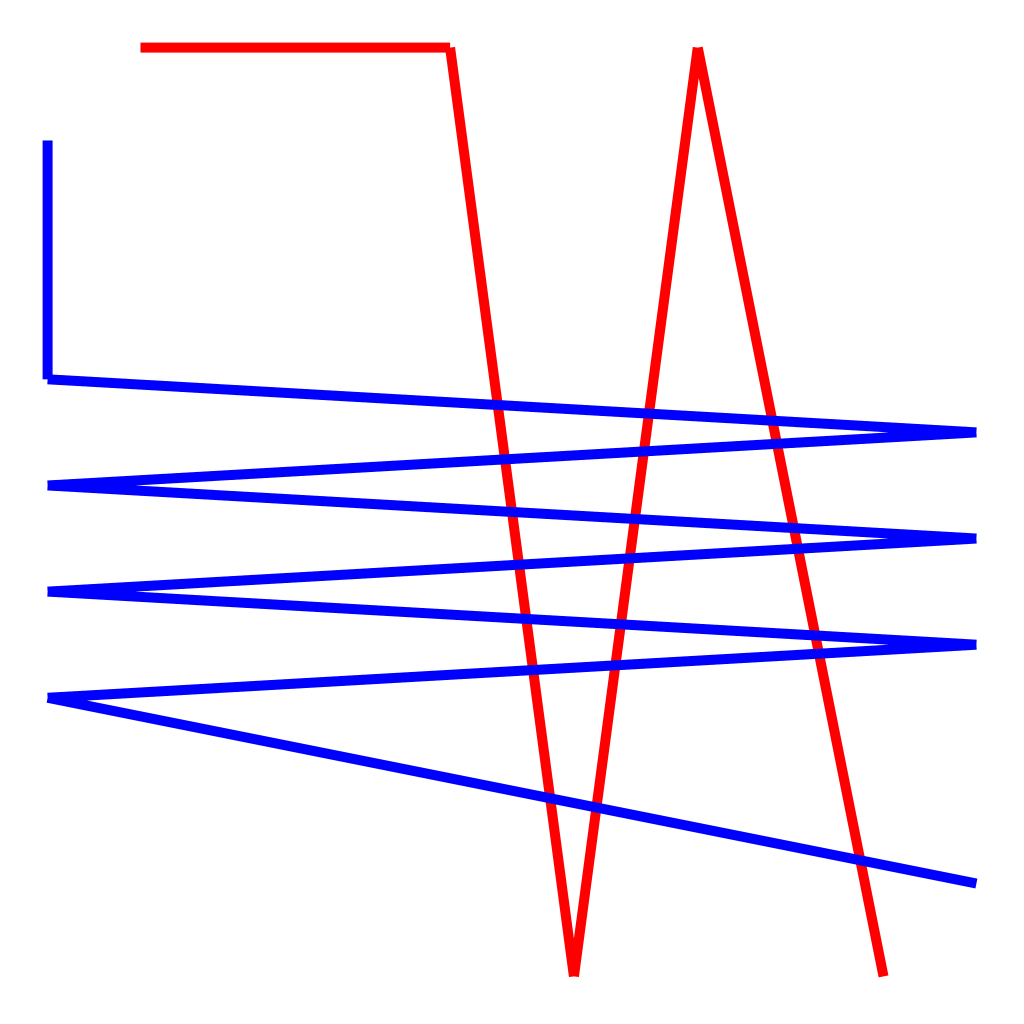
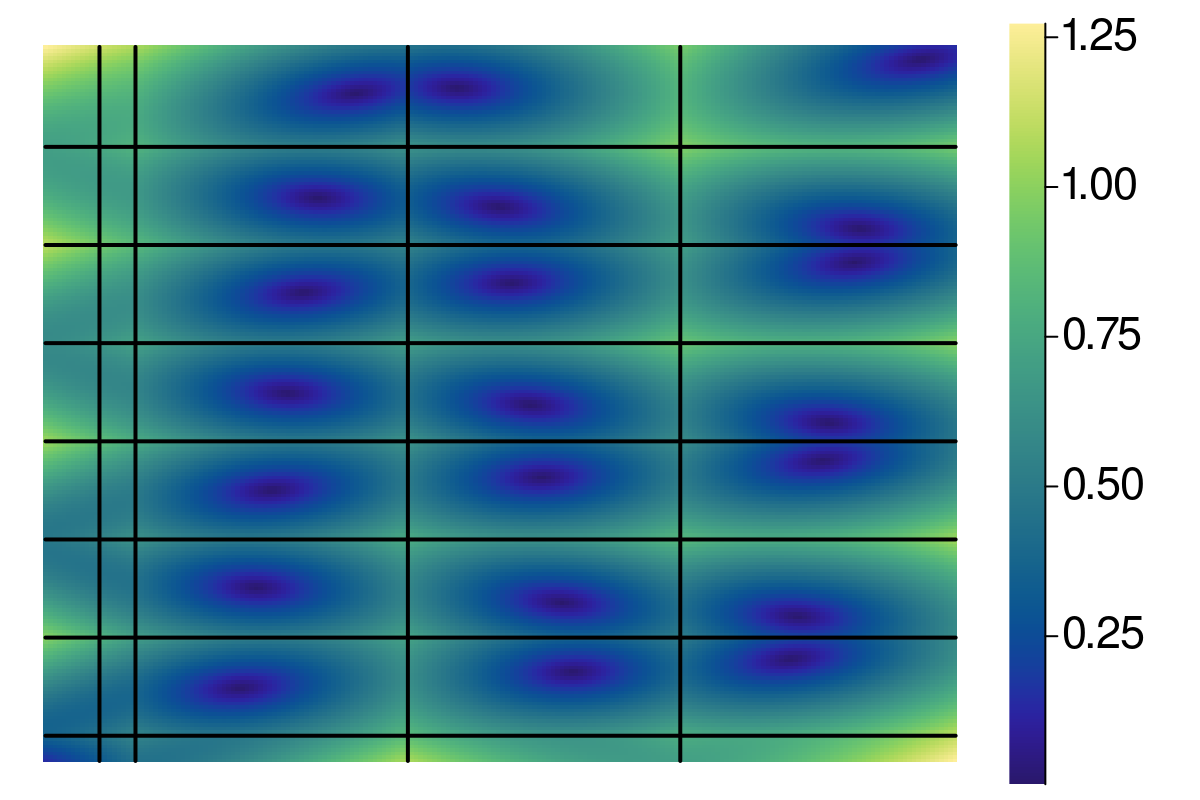
Fréchet distance: Free space diagram II


The Fréchet morphing in this case
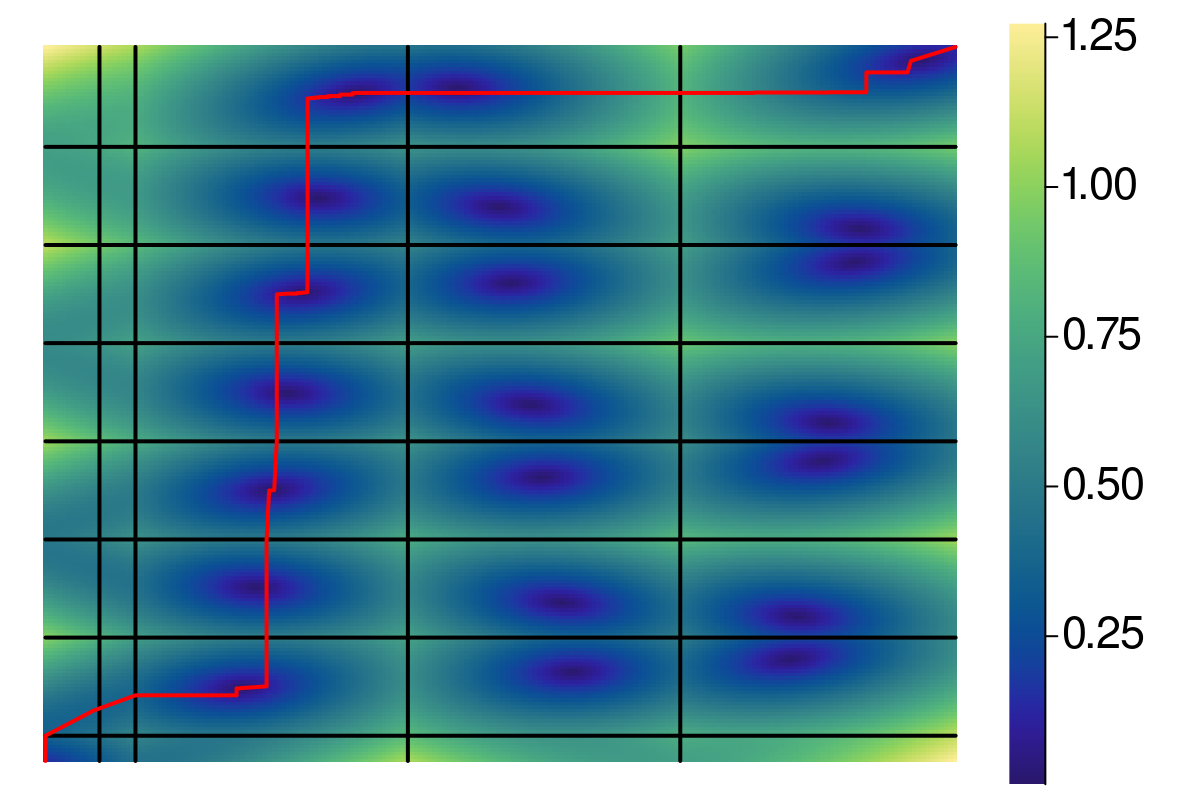
First idea: Make moves locally
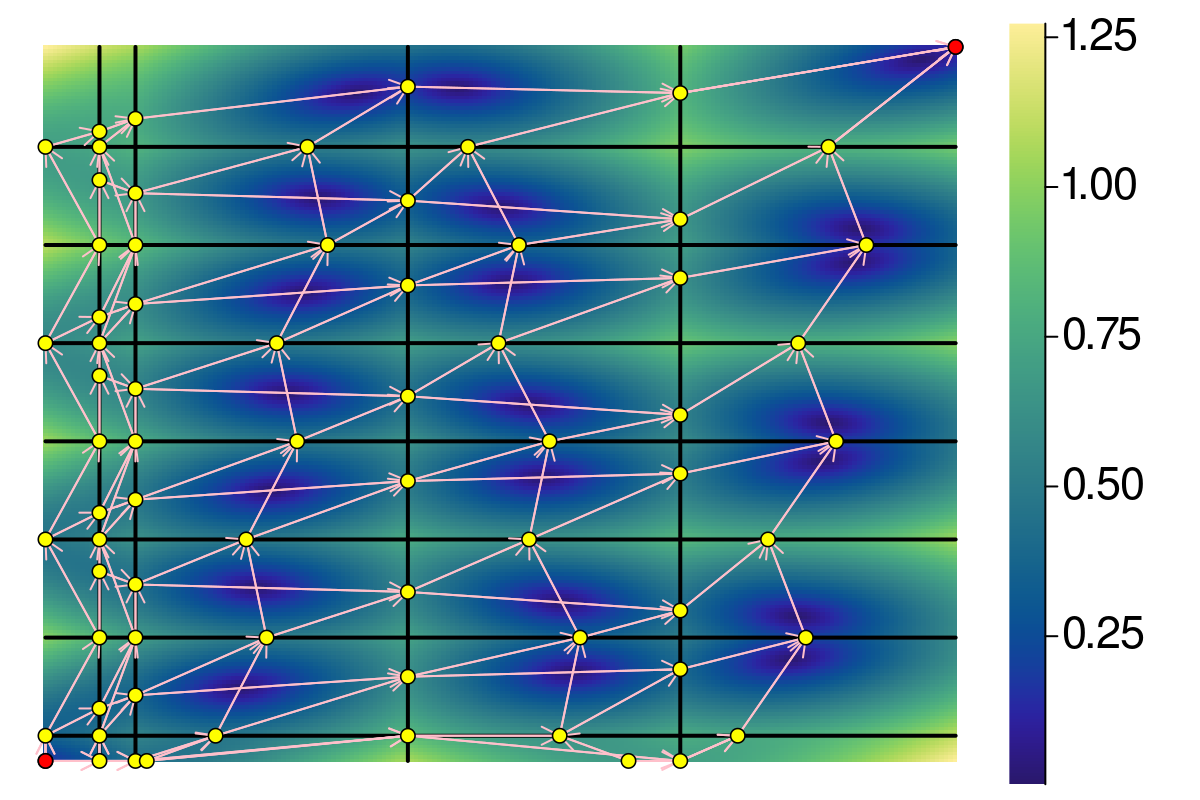
The problem: Bottleneck shortest path
- Directed graph
- Edges have height
- Compute path from source to target minimize max edge.
- Min max weight edge.
- Quadratic time since DAG.

The resulting morphing
Vertex-Edge Fréchet (new¿)
Easy to compute.
Not necessarily monotone!
But almost monotone!
Bottleneck shortest path
For general graphs
\(O(n \log n + m)\) Dijkstra
\(O(m \log^* m)\)
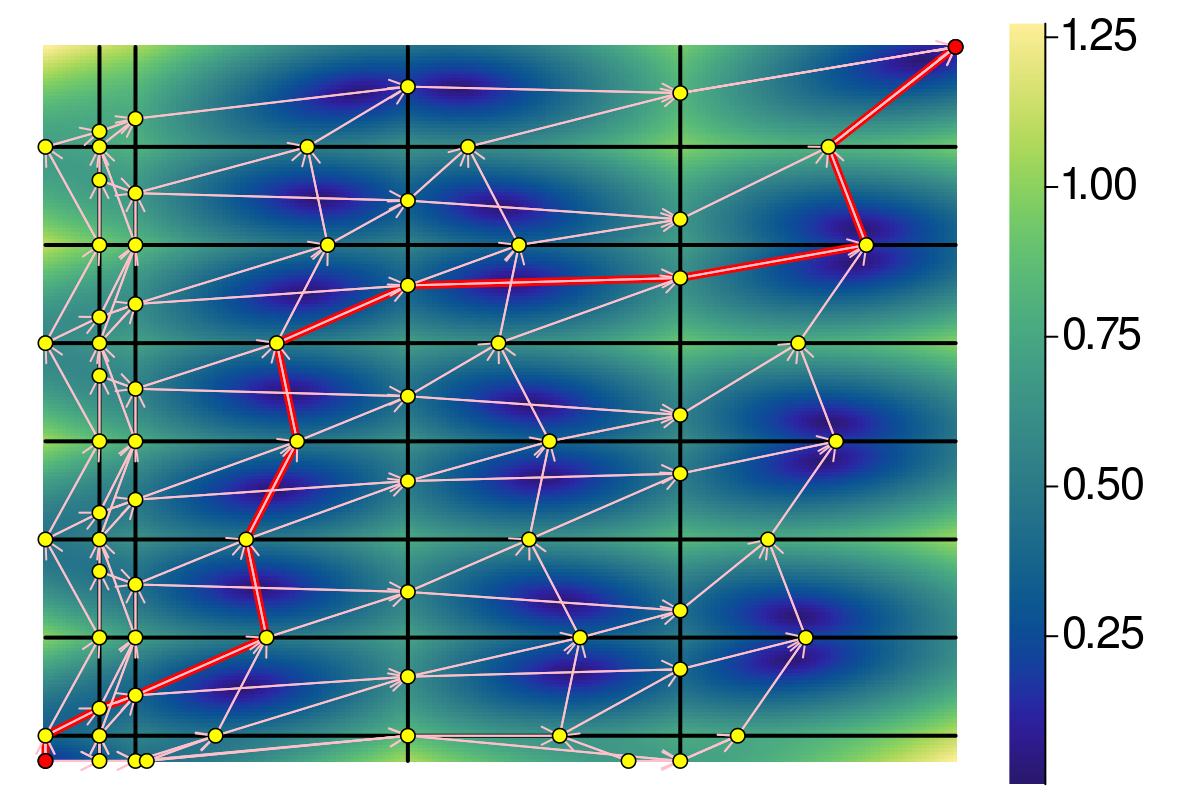
Bottleneck shortest path
Undirected graphs
\(O(n \log n + m)\): Via MST.
(Alt and Godau 1995) alg to compute weak Fréchet
\(O(n^2)\).
Retractable Fréchet
Always keep leash as short as possible
\(G\): Directed graph with weights on edges
Definition:
Retractable definition by example





Retractable Fréchet \(\implies\) better morphing
Computing Retractable Path
- Minor variant of Dijkstra/Prim:
- From visited vertices: Take cheapest edge going out.
- Prim algorithm for “directed” graph.
- Stop early!
- Faster than quadratic for “most” inputs.
- Algorithm extremely simple (implicit grid).
- Retractable Fréchet
- Definition due to (Buchin et al. 2019): “Locally correct”.
- Different algorithm
Claim: \(\forall \pi, \sigma\) : \(\,\,\) \(\mathsf{d}_{\mathcal{F}}(\pi, \sigma) \geq \mathsf{d}^{ve}_{\mathcal{F}}(\pi, \sigma)\).

Non-monotonicity…

Non-monotonicity…
Brute force monotonization…

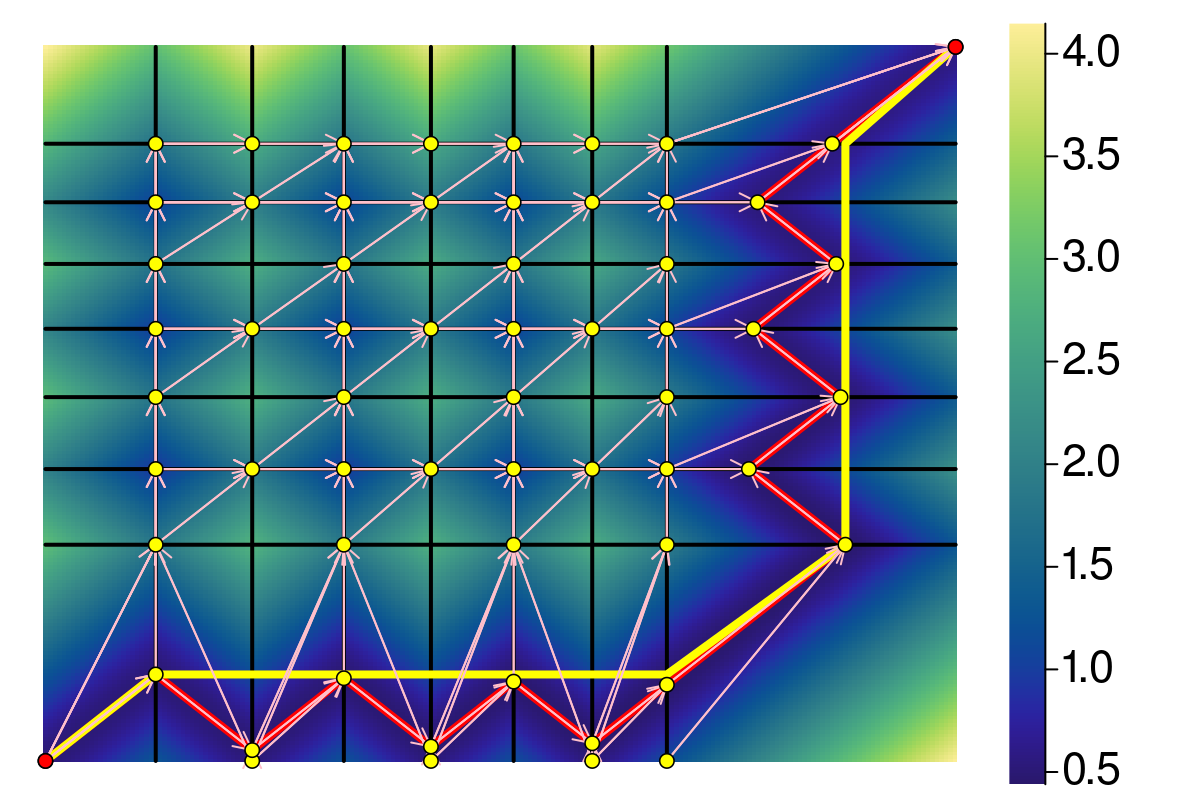
Optimal Fréchet \(\in[\mathsf{d}^{ve}_{\mathcal{F}}. \mathrm{mono}(\mathsf{d}^{ve}_{\mathcal{F}})]\).
Reduce non-monotonicity by inserting vertices
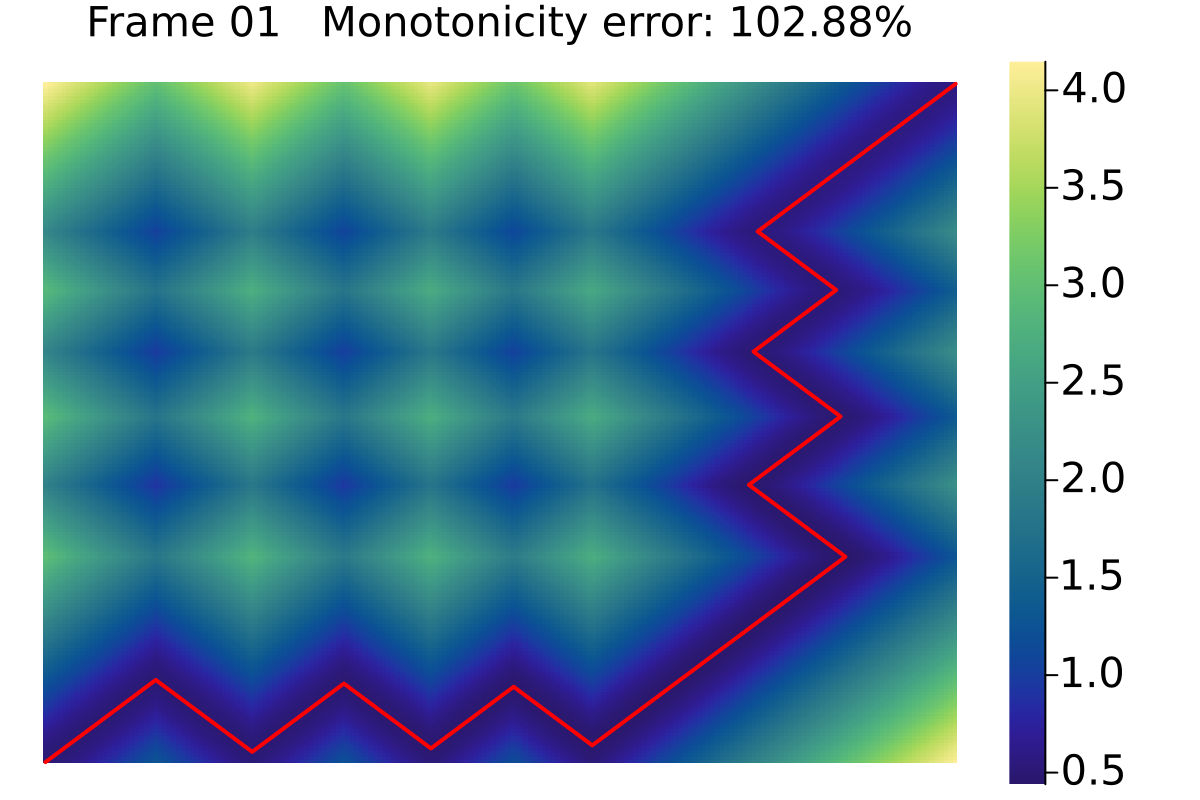

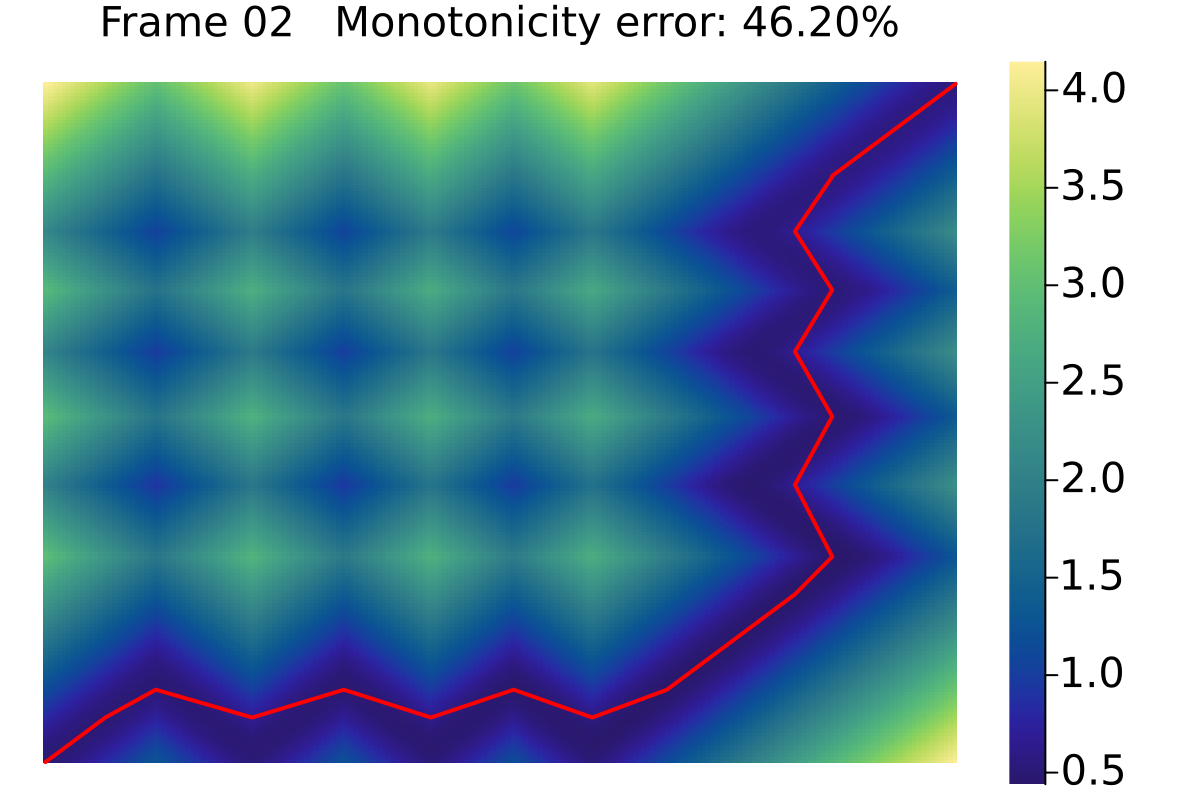

Reduce non-monotonicity by inserting vertices II
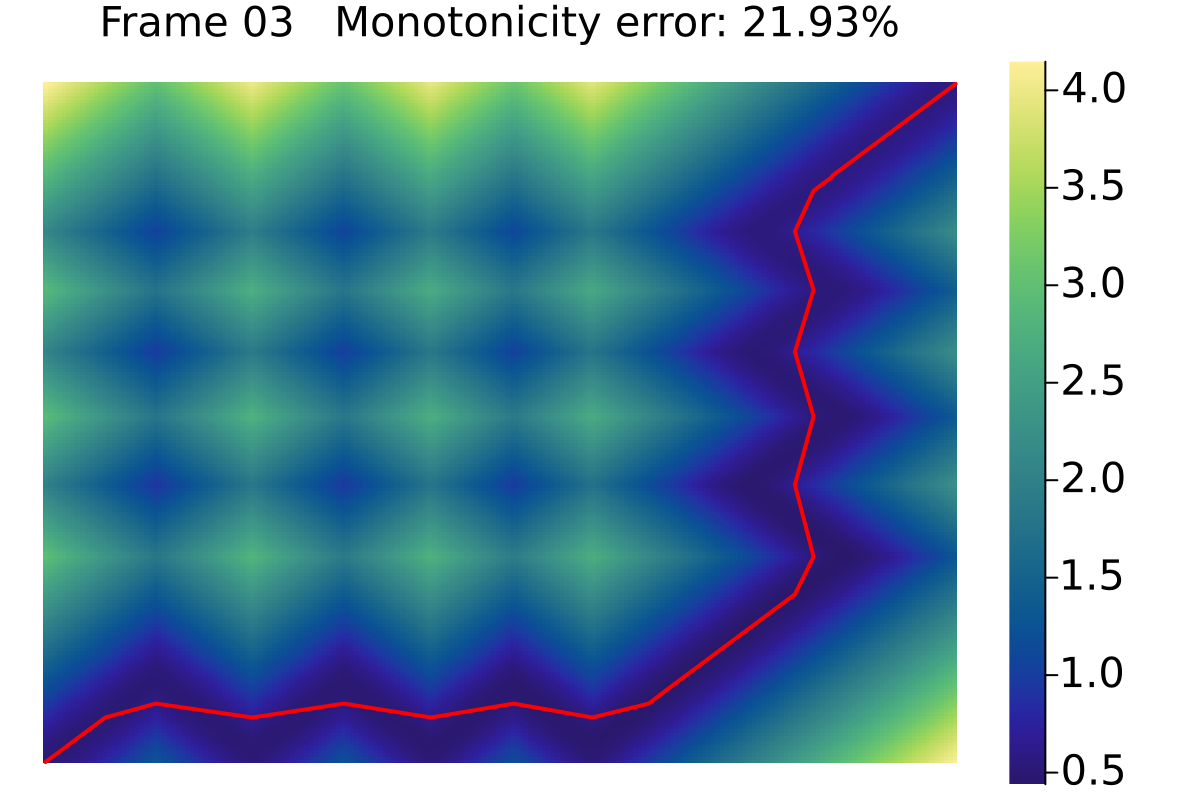
Reduce non-monotonicity by inserting vertices a few iterations later
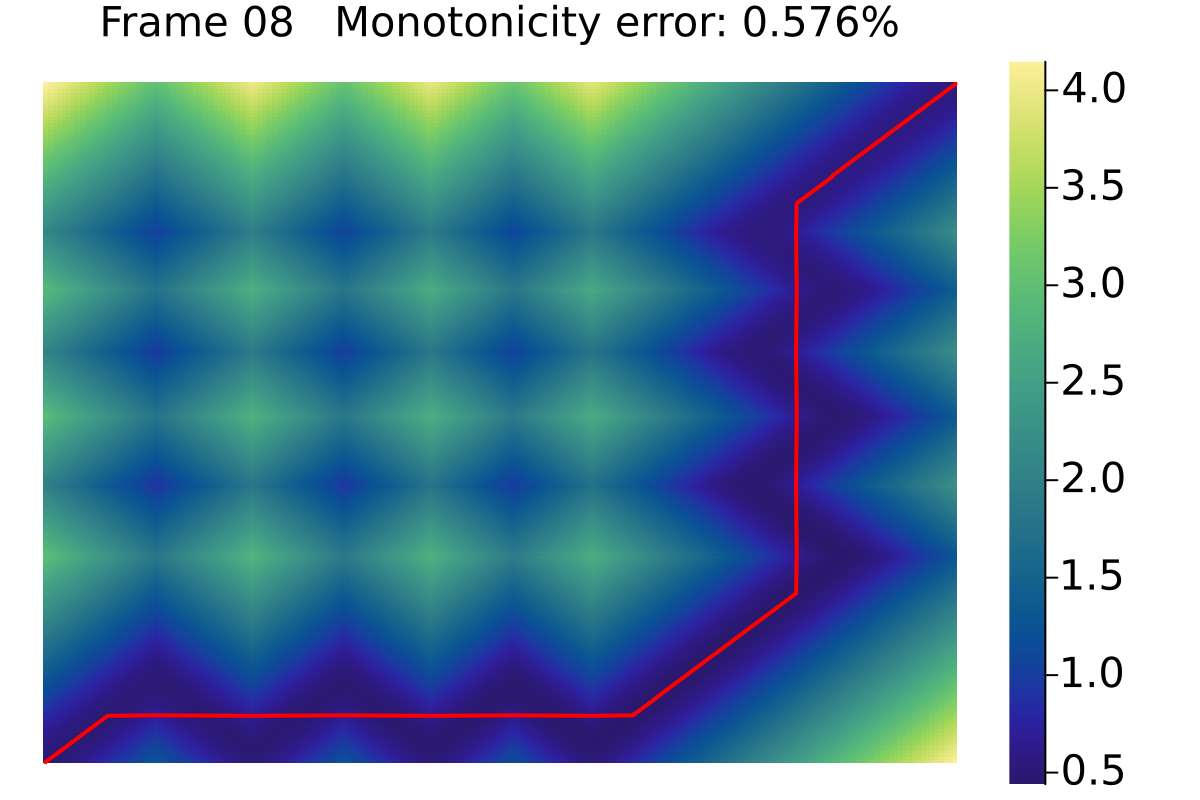
Exact \(\mathsf{d}_{\mathcal{F}}\) distance…
- While \(\mathsf{d}^{ve}_{\mathcal{F}}<
\mathrm{mono}(\mathsf{d}^{ve}_{\mathcal{F}})\)
- Refine curves
- Recompute \(\mathsf{d}^{ve}_{\mathcal{F}}(\pi,\sigma)\)
- isolate the bottleneck…
No such thing as exact algorithms
- Floating point issues.
- Consider \(1.0001\)-approximation as exact.
The result…
Algorithm for (exact) Retractable Fréchet
Retractablity is important…

Approx Fréchet: segment
Comp Fréchet distance segment \(\Leftrightarrow\) curve
\(\pi\): Polygonal curve
\(n = |\pi|\)
Exact: \(O(n \log n)\).
Practice: Simple + linear time




Lemma
\(3\)-approx. \(O(n)\) time for Fréchet dist between curve and segment.
Simplification: Approx
Greedy Fréchet simplification

- greedy simplification.
High quality “slow”.
Idea: Pick vertices greedy fashion…
Approximation via simplification
\(\pi, \sigma\): Input curves.
\(d \leftarrow\) silly upper bound on \(\mathsf{d}_{\mathcal{F}}(\pi, \sigma)\).
do
- \(r \leftarrow d/10\)
- \(\pi' \leftarrow \mathrm{simplify}(\pi, r )\).
- \(\sigma' \leftarrow \mathrm{simplify}(\sigma, r )\).
- \(\ell \leftarrow \mathsf{d}_{\mathcal{F}}(\pi', \sigma')\)
- Compute morphing \(\pi\rightarrow \pi' \rightarrow \sigma' \rightarrow \sigma\)
- If \(\frac{\ell +2r}{\ell-2r} \leq 1 + \epsilon\) \(\Rightarrow\) return approx.
- \(d \leftarrow d/4\).
Simplification: Exact
Simplification to make speed great again
Simplify curves (speedup).
Do simplification preserving bottleneck.
\(\Rightarrow\) Fast exact algorithm.
Many details…
Morphing sensitive simplification I


Morphing sensitive simplification II


Morphing sensitive simplification III


Morphing sensitive simplification IV


Shticks and tricks
and questions
Arising from the implementation
Low quality simplification, but fast
Task: Preprocess \(\pi\) (\(10,000\)s of vertices).
Query: Given \(\delta > 0\) output curve \(\sigma\) s.t. \(\mathsf{d}_{\mathcal{F}}(\pi, \sigma) \leq \delta\).
Running time: \(O( |V(\sigma)|)\).
Output sensitive simplification…





Given \(\alpha\): Extract all vertices label \(>\alpha\).
Running time: Output sensitive.
Simplifications hierarchy/caching
repeats many Fréchet distance queries on same curves.
Cache simplifications curves (a hierarchy).
use hierarchy to extract simplification quickly.
Precompute the simplification hierarchy.
Good idea if persistent data/task…
Implementations
Julia (Programming language)
Python without the stupidity.
As much typed as you want.
built-in package manager
Many libraries.
Source code of everything available.
Compiled on execution.
Designed for multi-threaded/parallel and distributed computing
Fun.
ACM SIGSPATIAL Cup 2017
The Fréchet distance is defined as the minimal length of a leash connecting a dog on one trajectory with its owner on a second trajectory, both never moving backwards. For this challenge, the “true” Fréchet distance shall be used, though teams are free to exploit the existing approximations including the Discrete Fréchet distance as they wish. The challenge for this year consists of finding and combining spatiotemporal indexing schemes with efficient algorithms for Range Queries in very large databases of trajectories…
C++
(Bringmann, Künnemann, and Nusser 2021): C++ implementation.
Implementation
Julia+Python package.
Experiments
(Bringmann, Künnemann, and Nusser 2021): C++ implementation.

Inputs

Julia results

Python results

Future research
Future research
Handling noise/outliers.
Consensus curve?